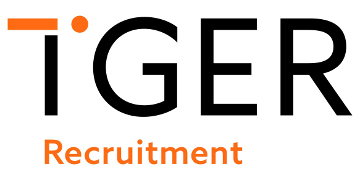If employers use AI, it is important they understand the key points about the technology, according to David Lloyd, chief data officer at Dayforce.
Speaking at Dayforce's conference on Tuesday, he said: “AI is not new, but we have only recently got the computing power and data to make it revolutionary.
“As we find more uses for it in work, we hear a lot of terms swirling around and it can feel very complicated. But frankly it is not mystical. Employers can go back to basics and make sure to understand it so we can use it effectively and ethically."
Here are five key AI terms HR should know.
Generative AI
Generative AI, like ChatGPT and Google Bard, learns patterns from data so that it can generate text, images or other data that have similar characteristics.
Also speaking at the conference, Katya Kudashkina, director of engineering, intelligent search and assistant at Dayforce, said: “AI itself is just a machine that can do something which humans usually do.
“Generative AI is a subset of that which learns from data to produce new data which is similar. For example, Chat GPT is a generative AI large language model. It mimics the understanding of language by using data to generate text based on similar text.
“The systems are based on maths, they don’t understand language but through this they can trick you into thinking they do.”
Programmes like Chat GPT could help with writing text internal communications and job descriptions. However, it also important to be cautious about the data employees input into generative AI programmes, to avoid data security concerns.
Algorithm
An algorithm is a set of rules which the AI model is told to follow to achieve a desired outcome. They are used in all AI systems.
Algorithms enable AI to learn, analyse data and give insights into patterns. For example, they can be used to analyse pay equity data to find trends in how much employees are paid based on gender, age and ethnicity.
Read more: UK lags behind US on AI adoption at work
Black box AI/White box AI
In black box AI, results are given without explaining how they are reached. It is often used in AI processes that are very difficult for humans to understand, such as voice or image recognition. Black box AI can be seen as an ethics risk when it is used in some HR processes, as it is hard to detect bias.
Conversely, white box (or glass box) AI is transparent about how it comes to conclusions. This means it is possible to check how an AI model made a decision.
AI bias
If AI is trained on biased data, it will produce biased results.
Speaking at a Trades Union Congress (TUC) conference in April, Labour MP Chi Onwurah warned that AI can perpetuate discrimination if the data it is based on is not reviewed.
She said: “AI is seen as very convenient because it can automate so many processes... but it can also automate racism, sexism and exploitation. Technology is not neutral, its direction is determined by those driving and governing it, as well as the data it is based upon.
"If something is not diverse by design it will not be equal by outcome."
A key example of this was when Amazon's AI candidate screening system was found to have a bias against women in 2018. As the roles had previously been dominated by male candidates, the AI was trained on data which was biassed towards men. Therefore it rated male candidates higher than female ones.
Read more: AI use in employee terminations raises HR concerns
Unsupervised and supervised machine learning
Machine learning is when an AI system uses data and algorithms to imitate the way humans learn, gradually improving its accuracy over time.
This can involve supervised learning and unsupervised learning.
Supervised learning uses categorised data or (‘labelled’ data) to train algorithms to classify other data into categories or labels. An HR use case of this would be to grade job applications to see which candidates are most likely to be hired and should be interviewed first, based on previous hiring decisions.
Unsupervised learning takes uncategorised data and uses algorithms to discover patterns within it. This could be used to uncover differences in pay, working patterns, or employee engagement in different demographics in the workplace.










